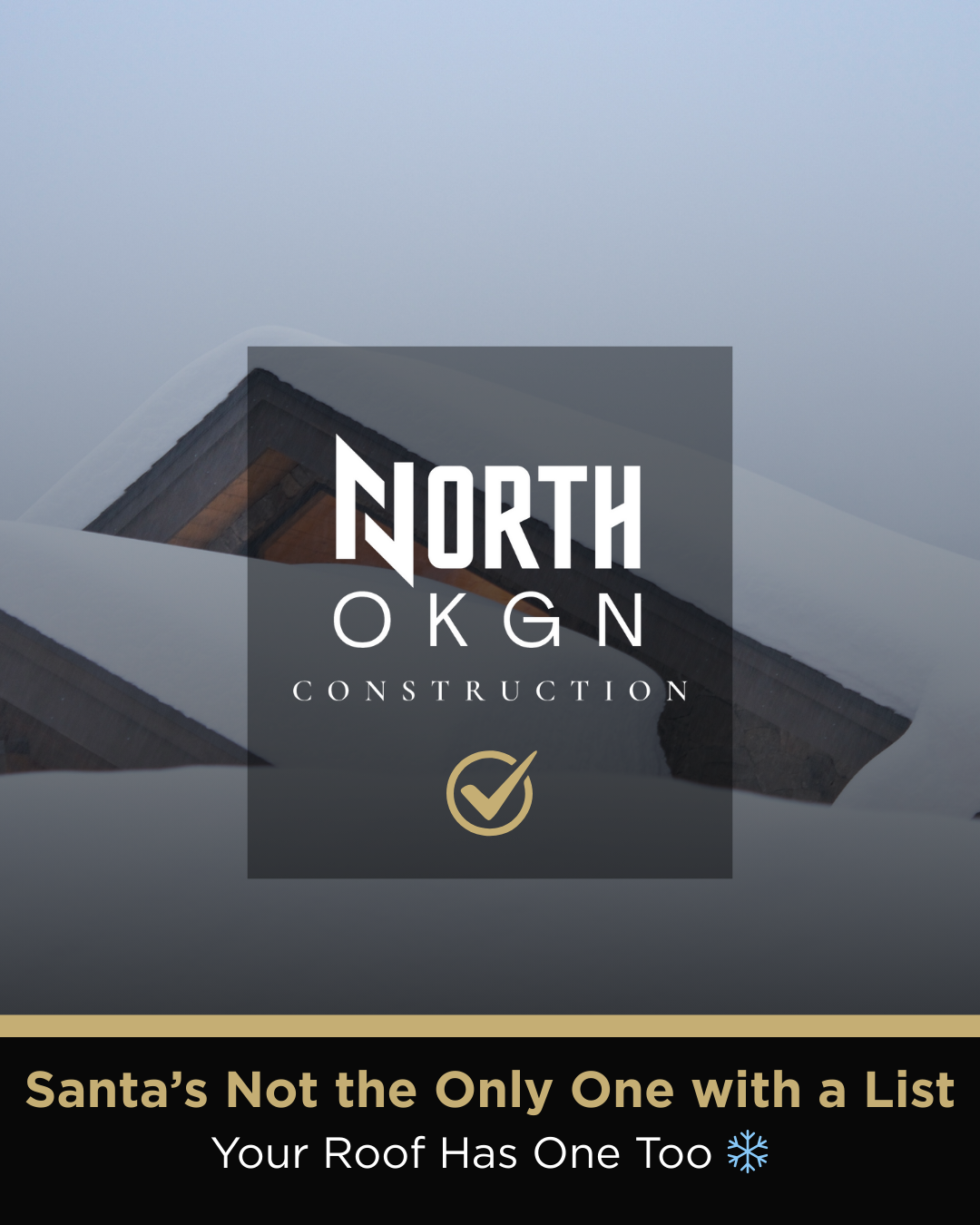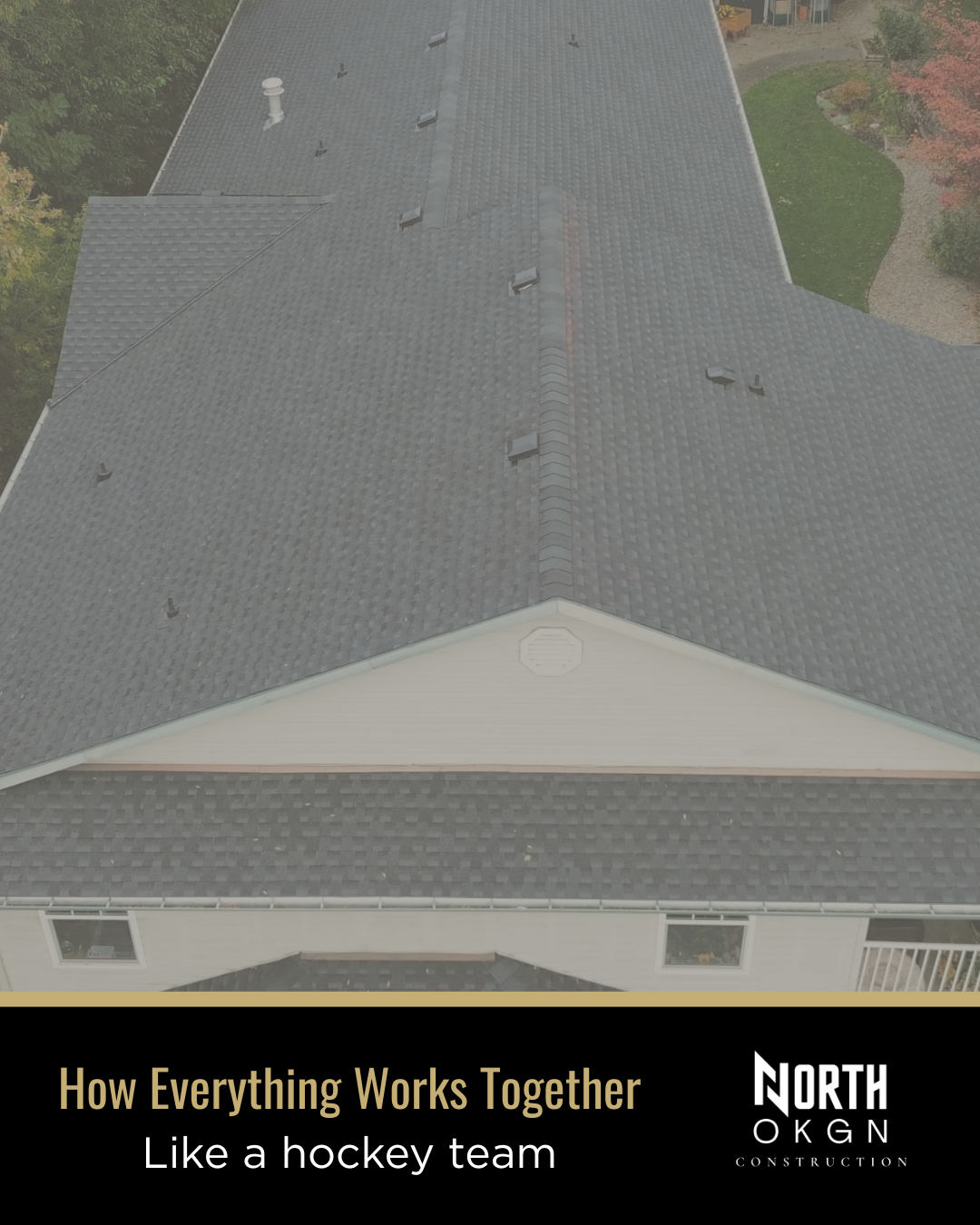Rotted Roof Sheathing: What You Need to Know Before It’s Too Late

Rotted Roof Sheathing: What You Need to Know Before It’s Too Late
Learn how to spot rotted roof sheathing, the difference between OSB vs plywood, and why proper roof decking matters. We'll explain how roofing problems often start underneath.
Introduction: What Is Rotted Roof Sheathing & Why Should You Care?
You might think your roof looks fine—but what if the real issue is hidden beneath the shingles? Rotted roof sheathing is one of the most common—and most overlooked—roofing problems we see here in the Okanagan. It can compromise the safety and lifespan of your entire roofing system.
In this post, we’ll break down what roof sheathing is, how to spot the signs of damage, and why your choice of materials (OSB vs plywood) and proper installation matter. If you're a homeowner in Vernon or the surrounding area, this is a must-read before your next roof replacement.
What Is Roof Sheathing & Why Does It Matter in Roofing?
Roof sheathing, also known as roof decking, is the wooden layer that sits beneath your roofing materials. It’s typically made from plywood or OSB (oriented strand board) and provides structural support for shingles, metal roofing, or any other material you’re using.
Without solid roof sheathing, your roof can’t:
· Support snow and wind loads
· Maintain proper ventilation and insulation
· Prevent water intrusion and leaks
· Keep your shingles aligned and long-lasting
If sheathing starts to rot—due to leaks, poor ventilation, or aging—it weakens your entire roof system from the inside out.
How to Tell if Your Roof Sheathing Is Rotted
Wondering how to identify rotted sheathing without climbing on your roof? Here are some common signs of roof sheathing damage:
· Sagging or dipping spots on the roof surface
· Visible water stains on ceilings or attic woodwork
· Musty or damp smells in the attic
· Peeling shingles or bubbling underlayment
· Soft spots or “give” when walking on the roof
If you notice one or more of these issues, it’s time to call a professional roofer to assess the deck beneath your shingles.
OSB vs. Plywood for Roof Sheathing: What’s the Best Choice?
When it comes to choosing between OSB and plywood for your roof deck, there’s a lot to consider:

Plywood is generally more durable in the long run, especially in moist or cold climates like the North Okanagan. While OSB is fine in many builds, plywood can offer better long-term value when protecting your home from rot.
Is It Worth Replacing Rotted Roof Sheathing? (YES—Here’s Why)
We get it—roofing is already a big investment. But ignoring rotted roof decking or skimping on materials can lead to:
· Interior water damage
· Mold growth in your attic
· Poor roof ventilation
· Higher energy bills
· Premature roof replacement
Spending a little more upfront on high-quality roof sheathing can save thousands over the life of your roof.
Why H-Clips Are Crucial in Roof Deck Installation
Let’s talk about something small but mighty: H-clips. These little metal spacers are installed between sheathing panels to:
· Improve strength and load distribution
· Reduce sagging between rafters
· Maintain consistent gaps for expansion
· Prevent panel buckling
While they’re not always required by code, at North OKGN Construction, we use H-clips as part of a durable, professional installation—because the details matter.
Our Step-by-Step Process for Replacing Rotted Roof Sheathing
When we’re called to replace a roof, we don’t just slap on new shingles. We inspect everything—especially the condition of your sheathing. Here's our process:
1. Thorough Roof Inspection – We check the surface, attic, and ventilation for signs of water damage.
2. Tear-Off & Deck Exposure – Shingles and underlayment are removed to expose the sheathing.
3. Identify & Remove Rotted Panels – Damaged areas are marked, cut, and safely removed.
4. Install New Plywood or OSB (with H-clips) – We choose the best material for your home’s needs.
5. Secure Fastening – Panels are installed per local building code with proper spacing.
6. Underlayment & New Roof System – We build your roof back up with durable, weather-resistant materials.
This thorough approach means you won’t have to worry about what’s lurking underneath.
Conclusion: Protect What’s Under Your Shingles
If you’re planning a roof replacement or wondering about your current roof’s health, don’t overlook the importance of roof sheathing. A solid, rot-free deck is the foundation of a long-lasting, leak-free roof.
At North OKGN Construction, we go beyond the surface. Whether you need a full roof replacement or a second opinion, we’re here to make sure every layer of your roof is strong, safe, and built to last.
Need an inspection?
We offer honest assessments and explain everything clearly—because we believe informed homeowners make better decisions. Contact us today to book a roof inspection or request an estimate.


















